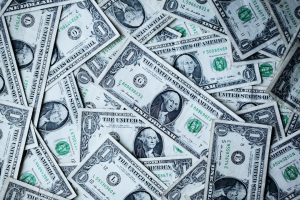Forex trading is a popular investment option for many investors worldwide. The forex market is the largest and most liquid market in the world, with trillions of dollars being exchanged every day. One of the key features of forex trading is leverage, which allows traders to control large amounts of currency with a small amount of investment. This leverage is expressed as a ratio, such as 1:500. In this article, we will explain what 1:500 in forex means, how it works, and the risks and benefits of using high leverage.
What is Leverage in Forex Trading?
Leverage is a technique that allows traders to control large positions with a small amount of capital. In forex trading, leverage is expressed as a ratio, such as 1:500. This means that for every $1 in your trading account, you can control up to $500 in currency. For example, if you have $1,000 in your trading account, you can control up to $500,000 worth of currency.
Leverage is a double-edged sword. On one hand, it can magnify your profits. For example, if you buy a currency pair and its value increases by 1%, you will make a profit of $5,000 if you are using 1:500 leverage and have invested $10,000. On the other hand, leverage can also magnify your losses. If the currency pair you have invested in decreases in value by 1%, you will lose $5,000.
Understanding Margin
Margin is the amount of money that you need to have in your account to open a leveraged position. In forex trading, margin is expressed as a percentage of the position size. For example, if you are using 1:500 leverage and want to open a position worth $100,000, you will need to have $200 in your account as margin. This is because 0.2% of $100,000 is $200.
Margin is important because it acts as a safety net for brokers. When you open a leveraged position, you are borrowing money from your broker. If the position goes against you and you lose more money than you have in your account, your broker may close your position to protect themselves from further losses. This is called a margin call.
The Risks and Benefits of Using High Leverage
There are both risks and benefits to using high leverage in forex trading. The main benefit is that it allows traders to control large positions with a small amount of capital. This can lead to large profits if the trade goes in the trader’s favour. However, high leverage also means that losses can be magnified. This can lead to margin calls and the loss of your entire trading account.
Another risk of using high leverage is that it can encourage traders to take on more risk than they should. When traders have access to large amounts of leverage, they may be tempted to take on positions that are too large for their account size. This can lead to reckless trading and large losses.
In order to mitigate the risks of using high leverage, traders should have a solid understanding of risk management. This means setting stop-loss orders to limit potential losses, and not risking more than 1-2% of their trading account on any one trade.
Conclusion
Leverage is a key feature of forex trading that allows traders to control large positions with a small amount of capital. 1:500 leverage means that for every $1 in your trading account, you can control up to $500 in currency. While leverage can magnify profits, it can also magnify losses. Traders should use high leverage with caution and have a solid understanding of risk management to avoid margin calls and large losses.





